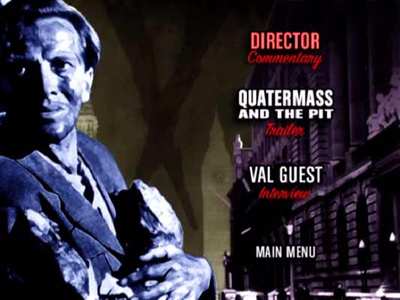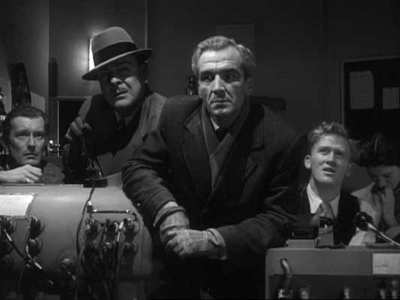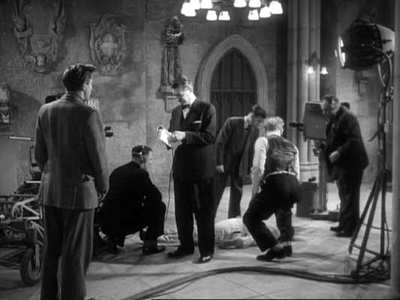Review of Quatermass Xperiment, The
Introduction
Long before the X-Files, long before Chris Carter was Head of Paranoia, another writer created a series about a threat from outer space. He deeply mistrusted "The Powers That Be" and made his hero an unconventional scientist. That writer was Nigel Kneale, and his hero was Professor Bernard Quatermass.
"The Quatermass Xperiment" was the movie that made Hammer Films. Without this, they would probably have never ventured into the world of Dracula, Frankenstein and The Mummy. It was the first film to be given the "X" rating by the British Board of Film Censors.
Two years earlier, in 1953, the BBC had made a serial by author Nigel Kneale called "The Quatermass Experiment". Limited in scope by its production at Alexandra Palace studios, the production directed by Rudolph Cartier had gripped the nation in a manner that modern tv executives could only dream of - think "Who Shot JR", "Big Brother", "I`m a Celebrity" and Richard Hillman hitting the water all rolled into one. Of course, they had a captive audience back then but the nation watched from behind the sofa and a phenomenon was born.
By the third episode, James Carreras the head of Hammer Films, was ready to make an offer to the BBC for the film rights. Contracts were signed and "The Quatermass Xperiment" went into production. (The title was altered to underline the "X" certificate the film was aiming for).
The storyline was simple. The working title "Bring Something Back" was blackly wry - Britain`s first space shot would return to Earth with two crew members missing and a third slowly transforming into a hybrid animal-vegetable-creature-from-space. Throw in plenty of histrionics and a high-voltage showdown in Westminster Abbey and the result was a mid-1950s winner.
Richard Wordsworth as Victor Carroon, the surviving member of the space shot, turns in one of the truly great movie-monster performances. At turns pathetic victim and creepily other-worldly, he shambles wordlessly through the movie, unable to arrest the changes devouring his body. Brian Donlevy`s Quatermass is hard-nosed and largely unsympathetic, but one has to agree with his stance once Carroon`s wife breaks the alien out of isolation. Jack Warner appears as the ever level-headed CID Inspector helping Quatermass and admirable support is given by characters including Thora Hird as a dipsomaniac witness to Carroon`s final state and an eight-year-old Jane Asher (yes, the Crossroads diva) as a little girl Carroon encounters by the canal in a scene creepily reminiscent of the Frankenstein Monster`s encounter.

Video
Made in 1955, the movie gains a lot of atmosphere from being shot in black and white. The image has some wear and tear but is generally pleasing to the eye. Aspect Ratio is the usual 4:3 (1.33:1) for the period.

Audio
A standard Dolby 2.0 reproduction of the original mono soundtrack.

Features
There is a full-length audio commentary with director Val Guest and Hammer historian Marcus Hearn as well as a short filmed interview with Val Guest. There is also a theatrical trailer for "Quatermass and the Pit". There are no subtitles.

Conclusion
"The Quatermass Xperiment" survives where the original 1953 BBC broadcast is lost to the ether (most of the middle section of the story went out live and was never telerecorded). For its execution, this Hammer version of the tale is genuinely a classic.
Your Opinions and Comments
Be the first to post a comment!